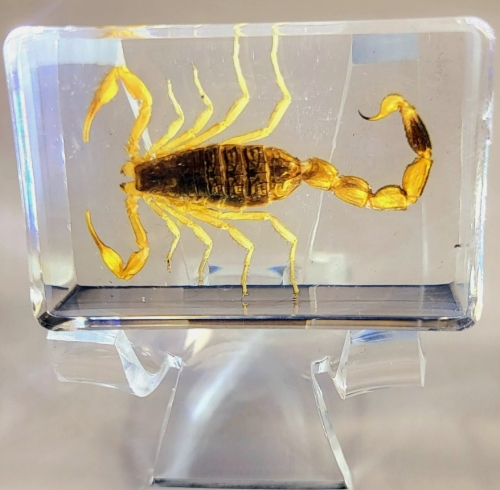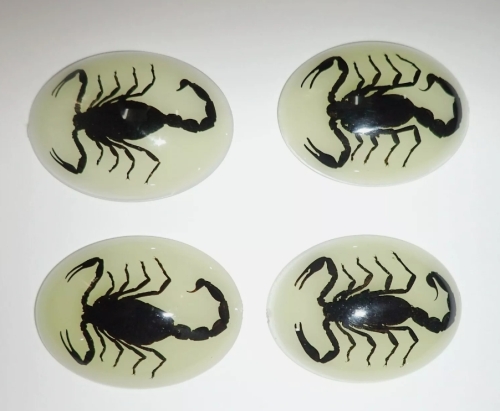Scorpions, mysterious and ancient creatures, are often feared and fascinated. Their appearance is unique, and the body presents a hard shell, usually black or brown, exuding a strange charm. The scorpion specimen, it is this charm solidified in a static moment, become the object of study and appreciation.
Scorpion body structure is very complex, the head has a pair of flexible antennae, can sense the surrounding environment. Its belly is a series of segmented structures, culminating in these amazing spines. The sting is not only a hunting tool for scorpions, but also their defense weapon, giving them unparalleled survival ability. The specimen preserves these details perfectly, giving us a glimpse into the uniqueness of this creature.
In the process of preparing scorpion specimens, researchers usually use drugs to embalm them to preserve their original shape and color. Once the specimens are established, they can be displayed in classrooms, museums or private collections and become important materials for biological and ecological research. By looking at the specimens, one can gain insight into the life habits of scorpions, their habitat, and their role in the ecosystem.
For biology lovers, scorpion specimen is not only a specimen, but also an emotional sustenance. Some collectors focus on different types of scorpions, whose rarity and uniqueness give each specimen an irreplaceable charm. At the same time, the scorpion's mysterious properties also add a layer of cultural and artistic connotation. Many works of art are inspired by the image of the scorpion, which often symbolizes strength and bravery.
However, despite their attractive aspects, scorpions sometimes inspire fear. The creature is seen as a symbol of evil in some cultures, so scorpion specimens are often given dark connotations. Between shadow and light, scorpions display a unique opposition that has attracted the interest of countless inquires.
















